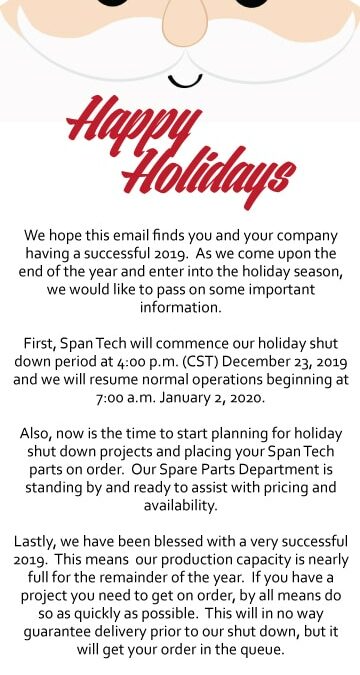
by Seth Bailey | Oct 24, 2019 | Industry Tips, Span Tech News
As we come upon the end of the year and enter into the holiday season, we would like to pass on some important information. First, Span Tech will commence our holiday shut down period at 4:00 p.m. (CST) December 23, 2019 and we will resume normal operations beginning...

by Seth Bailey | Oct 23, 2019 | Events, Industry Tips
At Span Tech, we love any opportunity to share our passion and experience with people. In September 2019, we got to do just that when we attended Pack Expo. This incredible event showcases advanced packaging equipment, materials, and containers from exhibitors. We...
by Seth Bailey | Oct 1, 2019 | Industry Tips
The phrase “lean manufacturing” has become quite buzzworthy these days, and it certainly deserves the attention. This popular technique is changing the way many companies like the Toyota Motor Corporation operate and create their products. But what is lean...




